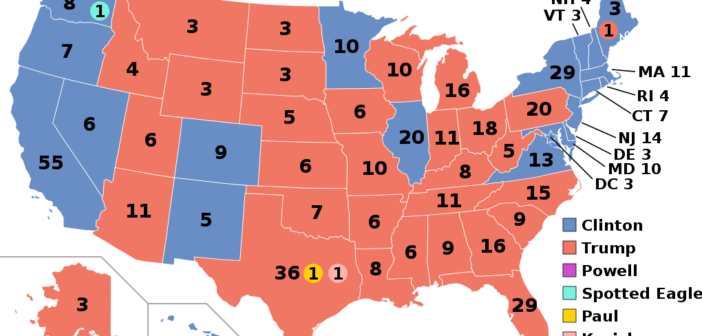Electing the President of the United States seems like a simple process. It’s Election Day. You go to the polls and cast your vote for president. Then the votes are tallied up, and the candidate with the most votes wins. Except it doesn’t work that way. The United States elects its president using something called “The Electoral College”.
The Electoral College is a more complex system. Each state gets an elector for every seat in Congress that it has. For example, Florida has 27 seats in the House of Representatives, and 2 seats in the Senate, totaling 29 electoral votes. When you cast your vote for president, you are choosing whether the electors are Republican electors or Democrat electors, and then those people are the ones who vote for president. Basically, you are voting for the people who vote for the president. Here are 4 reasons why this system needs to be changed.
- Electors are always faithful to their voters.
One of the reasons that the Founding Fathers included an electoral college in the constitution was because information traveled very slowly in the late 1780’s. Mail was their only form of long-distance communication, and it seemed impossible to inform everyone. They feared that the citizens would be too uninformed, due to a lack of access to information, to make an informed decision when casting their votes. They decided that it would be better to have informed electors to decide who we elect to office. The average voter today is much more informed compared to way back then. However, it does not matter how informed the voters are because electors always vote for the party they identify with; less than 30 electors in the history of presidential elections have voted for a candidate outside of their party. Additionally, it is redundant to let everyone vote, get a result, and then have the electoral college vote the same as the population.
- Candidates campaign in the big states anyway.
One argument favoring the Electoral College says that if the electoral college was abolished and a system where the person with the most votes wins, then candidates would just campaign to the states with the largest populations. However, the problem with this argument is that candidates already target the big states. In fact, a majority of the 2016 campaign was spent in Florida (29 electoral votes), Ohio (18 electoral votes), and Pennsylvania (20 electoral votes). The only reason why states with high populations like Texas and California weren’t campaigned in more frequently was because they are so dominated by one party, that trying to win those states over is a lost cause.
- It’s not Big States vs. Small States, It’s Democrats vs. Republicans
Another argument for the Electoral College is that it gives more power to the small states. This is true because without the Electoral College, states like Wyoming with a population of around 600,000 do not stand a chance against the 40 million in California. However, the problem with this argument is that the United States election is not divided between rural and metropolitan areas; it’s politically divided. Small-population Democrat states like Vermont are backed by large Democrat states like California. In the same way, Wyoming is supported by the predominantly Republican Texas. Even though the small states would lose their power in the election, the slack would be picked up by the larger states.
- Having a popular vote simplifies the voting process.
Many people argue that having a popular vote would cause many complications. Some argue that the United States Government would need to create an agency to tally the votes. However, they would not need to create an agency because the states already tally their own votes, and then they ship the results over to the Electoral College. Another argument is that a popular vote has no way to resolve a tie, which is when a candidate doesn’t get the majority vote. The solution is simple, though. If there is a tie in the Electoral College, or if no one gets the 270 votes required to win the election, then the President is selected by the House of Representatives. We can just continue using this system, where if a candidate doesn’t get more than 50% of the popular vote, then the House of Representatives can decide who the winner is.
The issue with voting systems boils down to this: The Electoral College is a method that works. The system still promotes democracy, and it still gets the job done. But in my opinion, a popular vote does just as much, except it’s faster and easier to do.





